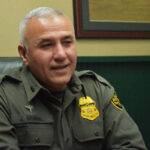The first fair in the United States was held in New York in 1814. Fairs were very important both as social events and as a means of educating the farmer. Fairs drew the isolated farm families to town to socialize and to allow the farmers to see new seed varieties, new livestock breeds and new farming equipment.
The first local fair was organized by the Aroostook Agricultural and Horticultural Society in 1845, and the Northern Maine Fair was incorporated on July 16, 1850. The first Northern Maine Fair exhibition was held Oct. 8 and 9, 1851.
Early in the history of the Northern Maine Fair, it was decided that Presque Isle would be its permanent home due to its central location and because it then saved the land from being parceled out for house lots. However, for the first 30 years of the fair’s history, the association owned no land, no property, no buildings or exhibition halls, stables or pens.
According to notes contained in a very old Premium List, a correspondent with the Bangor Commercial newspaper reported that the exhibits for the fair of 1913 were held “among the stumps in the old town of Maysville, now Presque Isle, near the present site of the village.” The gate receipts from this fair show 22,000 in attendance with gate receipts of $18,359.46.
The first meeting of the Northern Aroostook Agricultural Society was held on Feb. 22, 1851. At that time, the group had a membership of 91 persons. J. Wingate Haines of Fort Fairfield was named president.
This first exhibition was “of great interest to the people. Men, women, young people and the boys and girls had looked forward to it, with great anticipations, for a gala day.” Having a fair was new to the area and this may have been the first fair “east” of Bangor.
Fairs were typically held in the early autumn after the crops had been harvested. For many years through the 1900s, the local fair was held during the first week of September and only lasted three days. It was later that it was moved to August and expanded to include a full week of activities.
From 1890 through the years, the prosperity of the Northern Maine Fair kept pace with the growth and increased wealth of The County. New and enlarged buildings were made, more and larger premiums were offered, larger attendance and patronage came as the prosperity, which made Aroostook noted for its production, and wealth have combined in making the Northern Maine Fair the best in the state.
The highest interest in “the Fair” came in the 1920s when the local Mooseleuk Club, a men’s sporting club located in Presque Isle, had purchased the famous race horse, John R. Braden, for $4,800. (Yes, our movie theatre is named after a horse.) Groups from Caribou and Houlton also purchased competitive horses. Fair attendance for these meets was recorded at 50,000 a day.
Harness racing was at its peak in the Maritime Provinces at this time as well. The exploits of John R Braden were just as popular on the Canadian circuit as here at home. An estimated crowd of 25,000 watched him defeat world champion Margaret Dillon and competitor Directum J in three consecutive heats at the Island Park Raceway in Woodstock, New Brunswick.
Harness racing was so popular during this time that even sporting teams did not elicit the same amount of interest that the contests between the local horses did. The people of Presque Isle opened a bank account in the name of John R Braden, a novel concept. His winnings were deposited to this account. Over the course of his career, John R Braden earned over $48,000.
The 1922 Northern Maine Fair “Premium List”, as the program is called, also carried an advertisement for the “Aroostook County Fair – Caribou Fair” to be held on August 22nd – 25th.
In 1942, the Northern Maine Fair was suspended due to wartime conditions. During this time, the U.S. government leased the fair grounds for housing. This was a “fairly” common practice as many fairs around the country closed at this time. The fair resumed in 1946.
On June 1, 1949, a fire caused by three young boys caused $100,000 worth of damage and destroyed the 300-foot grandstand, the judges’ stand and several outbuildings. The grandstand seated 3,300 and was one of the largest in Maine at the time. This was a devastating blow to the Northern Maine Fair Association as the fire came just two months prior to the beginning of the fair and harness races. The Fair Association began an advanced ticket sales campaign to raise money to rebuild and said the decision as to whether or not the fair would be held depended on the success of the campaign. The grandstand was rebuilt in time for the fair.
The Northern Maine Fair is a member of the Maine Association of Agricultural Fairs. This year, the fair will be held on the fairgrounds Aug. 5-8.
Kimberly R. Smith is the secretary/treasurer of the Presque Isle Historical Society.








